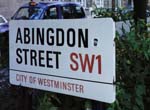Repossessions could reach 90,000
With unemployment rising, the number of houses repossessed by lenders could reach 90,000, according to a report


For every 500,000 people becoming unemployed there will be a further 20,000 repossessions, says a new report from CB Richard Ellis.
'Loss of income through unemployment is the major contributory factor towards arrears and repossessions,' says the report.
The Government support for mortgage interest payment kicks in 13 weeks after being made unemployed.
The report highlights the most groups most vulnerable to repossession being the sub-prime market and the buy-to-let borrowers.
'High mortgage rates are a particular problem for borrowers coming to the end of their current mortgage deal. These homeowners are finding it difficult to obtain a mortgage on comparable terms and may not be able to afford the higher rates,' it says.
'There are a large tranche of vulnerable borrowers which could increase the severity of the problem,' the report concludes.
Sign up for the Country Life Newsletter
Exquisite houses, the beauty of Nature, and how to get the most from your life, straight to your inbox.
Country Life is unlike any other magazine: the only glossy weekly on the newsstand and the only magazine that has been guest-edited by HRH The King not once, but twice. It is a celebration of modern rural life and all its diverse joys and pleasures — that was first published in Queen Victoria's Diamond Jubilee year. Our eclectic mixture of witty and informative content — from the most up-to-date property news and commentary and a coveted glimpse inside some of the UK's best houses and gardens, to gardening, the arts and interior design, written by experts in their field — still cannot be found in print or online, anywhere else.
-
 Folio, Folio, wherefore art thou Folio? Shakespeare set to be auctioned by Sotheby's
Folio, Folio, wherefore art thou Folio? Shakespeare set to be auctioned by Sotheby'sFour Folios will be auctioned in London on May 23, with an estimate of £3.5–£4.5 million for 'the most significant publication in the history of English literature'.
By Lotte Brundle Published
-
 Damon Hill's former home in Marbella is the perfect place to slow down
Damon Hill's former home in Marbella is the perfect place to slow downThe glorious Andalusian-style villa is found within the Lomas de Marbella Club and just a short walk from the beach.
By James Fisher Published
